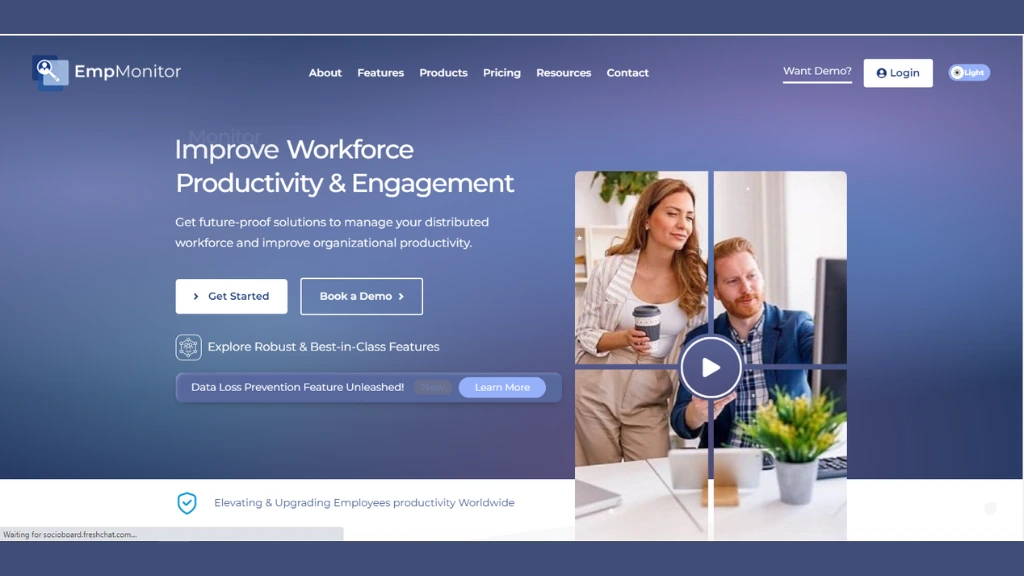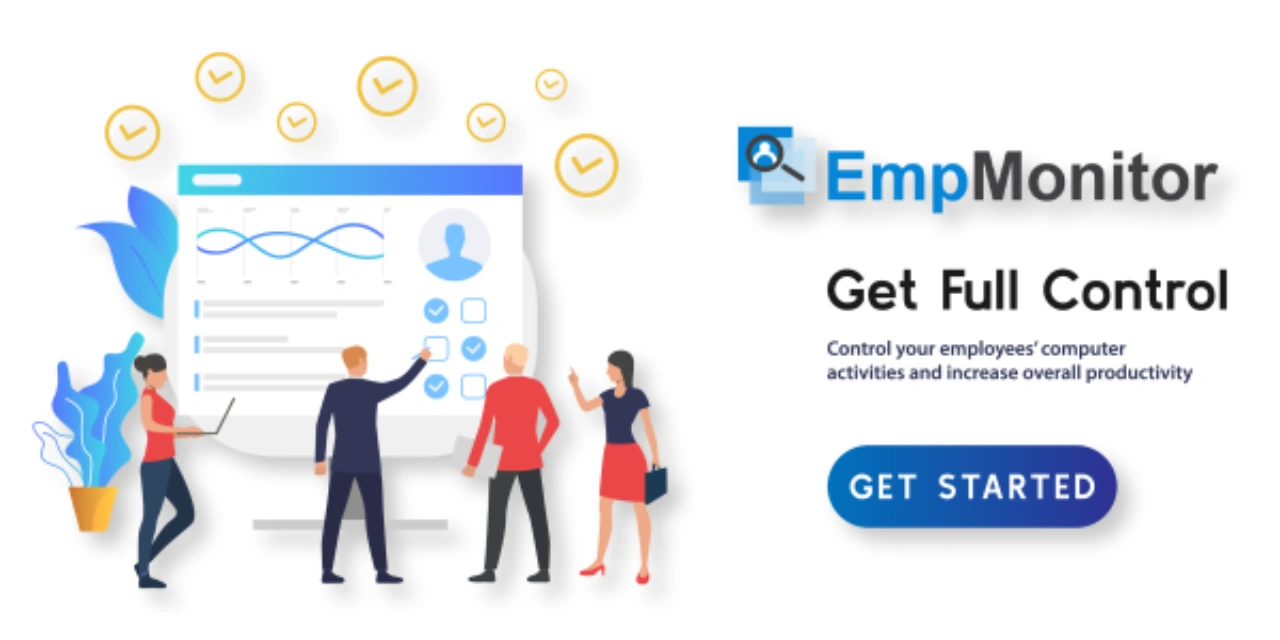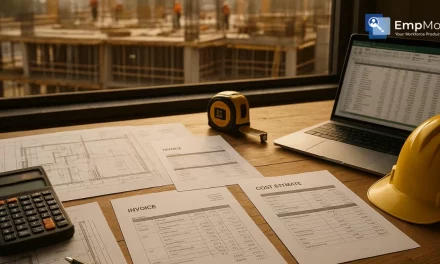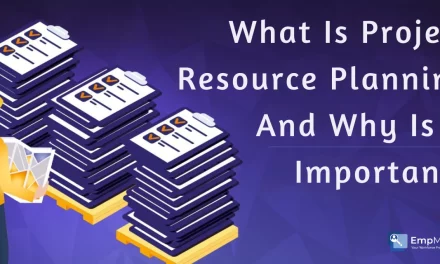Every successful project, whether big or small, relies on a well-structured plan. At the core of this plan lie project deliverables, the key outputs that determine whether a project meets its objectives. These can be anything from a software application, a research report, a marketing campaign, or even a process improvement strategy. Clearly defining them helps teams stay organized, meet deadlines, and achieve project success.
However, many project teams struggle with understanding and managing deliverables in a project effectively. Projects may experience budget overruns, delays, and misaligned stakeholder expectations without clarity.
In this blog, we’ll explore what are deliverables in project management, their significance, and how to manage them efficiently. By the end, you’ll know how to avoid common mistakes and leverage project management tools for success.
Let’s get started!
In a hurry? Listen to the blog instead!
What Are Project Deliverables?
At its core, project deliverables refer to the specific outputs or results that a project must produce to be successful. These can be tangible (such as a product, report, or software) or intangible (such as a training session or improved workflow). Unlike project tasks that describe the work needed to achieve an outcome, deliverables focus on the final result.
Some Project Management Deliverables Examples
The nature of deliverables of any project varies depending on the industry and project type. Below are some project deliverables examples across different sectors:
Software Development: Developing a fully functional mobile app, creating comprehensive source code documentation, and preparing user manuals for end-users.
Marketing: Crafting a short, engaging ad copy for social media campaigns, creating a detailed content calendar for social media planning, and generating performance reports to evaluate campaign success.
Construction: Creating a complete architectural blueprint for the building layout, constructing building structures according to design specifications, and preparing safety inspection reports to ensure regulatory compliance.
Consulting: Developing a strategic business plan to improve company performance, preparing financial analysis reports to guide investment decisions, and designing a process improvement framework to optimize workflows.
By defining deliverables in any project early on, teams can ensure they stay on track and meet stakeholder expectations effectively.
How Do Project Deliverables Differ From Objectives And Milestones?
Understanding the differences between project deliverables, objectives, and milestones helps in setting clear expectations and managing projects effectively. While they are interconnected, each plays a unique role in the project lifecycle.
Project Objectives vs. Project Deliverables
Project objectives describe the outcome or benefit a project wants to achieve. They explain what the project is aiming for, like “Reducing customer support response time by 20%.”
On the other hand, deliverables are the actual results or products created to achieve those objectives, such as “A customer support chatbot added to the website.”
While objectives focus on the end goal, deliverables are the physical or digital outputs that help reach that goal.
Project Deliverables vs. Milestones
Project Milestones are important checkpoints in a project’s timeline that show how far the project has progressed. They don’t produce any actual output but mark key stages like “Completion of chatbot prototype,” “Approval of website design,” or “Finishing product testing phase.”
These points help track progress, while project deliverables are the final results handed over to the client, such as the fully developed chatbot software.
Understanding these distinctions is crucial for effective project planning and execution, ensuring clarity in roles, expectations, and outcomes.
Why Are Project Deliverables Important?
Clearly defined deliverables play a crucial role in ensuring project success. Without them, teams may lack direction, stakeholders might have mismatched expectations, and projects can face delays, budget overruns, or failure. Below are the key reasons why deliverables in project management are essential:
Improved Project Planning and Execution
Well-defined deliverables for any project can act as a roadmap, helping teams break down complex projects into manageable parts. They provide clarity on what needs to be done, by whom, and when. This makes it easier to allocate resources effectively and avoid confusion.
Enhanced Communication and Collaboration
When project deliverables are clearly outlined, stakeholders, clients, and team members have a shared understanding of the expected outcomes. This reduces miscommunication, aligns expectations, and fosters better collaboration among different departments.
Increased Accountability and Ownership
Each deliverable is assigned to a specific team or individual, making it clear who is responsible for its completion. This enhances accountability, encourages ownership of tasks, and ensures that work progresses efficiently.
Better Risk Management
Breaking down projects into specific deliverables can help project managers to identify potential risks early. Tracking the progress of the deliverables of a project allows teams to address bottlenecks, mitigate risks, and prevent costly delays.
Higher Likelihood of Project Success
A project with clearly defined deliverables is more likely to be completed on time, within budget, and up to quality standards. By ensuring that all stakeholders are aligned and aware of what will be delivered, teams can work towards successful project completion with fewer setbacks.
Looking for a reliable way to manage your project effortlessly? With EmpMonitor’s project management software, streamline task assignments, track progress, and ensure project success.
Types Of Project Deliverables
Project deliverables can be categorized based on their purpose and who they are intended for. Understanding these types helps teams define expectations and manage projects effectively.
Internal vs. External Deliverables
Internal deliverables are used within the organization and are not shared with clients. These could include project status reports for management, team training materials, or internal testing documents. They help ensure smooth coordination and efficient project execution.
External deliverables, on the other hand, are provided to clients or stakeholders as part of the project. Examples include a completed software product, a marketing campaign, or a construction project handed over to the owner. These deliverables represent the final output that meets the client’s needs.
Process vs. Product Deliverables
Process deliverables support the development of the final product. These include wireframes for a website, a business strategy document, or a detailed project plan. They help teams stay on track and ensure smooth execution.
Product deliverables are the final results of a project. These could be a fully functional e-commerce website, a market research report, or a newly developed mobile application. These are what ultimately determine the project’s success.
By defining project deliverables using these categories, teams can ensure better planning, execution, and alignment with stakeholder expectations.
How To Define Project Deliverables?
Defining project deliverables requires a structured approach to ensure clarity, feasibility, and alignment with project goals. Follow these steps to establish well-defined deliverables:
1. Ask the Right Questions
Start by understanding the bigger picture. Deliverables should directly contribute to the project’s success. Ask essential questions:
- What is the primary goal of the project?
- What results do stakeholders expect?
- What specific outputs are needed?
- How long will it take, and what resources are required?
- How crucial is this deliverable to overall success?
Answering these questions provides a strong foundation for defining deliverables.
2. Gather Requirements
Once deliverables are identified, define their requirements. Requirements set the criteria for determining whether a deliverable meets expectations. Missing or vague requirements often lead to scope creep and revisions.
Engage stakeholders to understand their priorities and consider end-users’ needs to ensure the deliverable is valuable.
3. Identify Key Performance Indicators (KPIs)
Breaking deliverables into smaller phases makes execution manageable. Establish KPIs to track quality, timelines, budget constraints, and performance. These metrics help teams stay on track.
4. Review and Get Approval
Once deliverables are defined, review them with stakeholders to ensure alignment with project goals. Getting approval early prevents costly revisions and misalignment.
By following these steps, teams can define deliverables for any project effectively, ensuring smooth execution and successful completion.
The Proper Way To Manage Project Deliverables
Effectively managing project deliverables is key to keeping projects on schedule, maintaining quality, and meeting stakeholder expectations. Here’s how to do it:
Define Clear Criteria
Establish specific and measurable acceptance criteria for each deliverable. These criteria should be agreed upon by all stakeholders to ensure a shared understanding of what a completed deliverable looks like. Clearly defining expectations minimizes confusion and prevents scope creep.
Set Realistic Deadlines
Deliverables should have achievable deadlines based on the project’s scope, resources, and potential risks. Collaborate with your team to set realistic timeframes, ensuring that tasks are neither rushed nor delayed. A well-planned timeline allows for better resource allocation and smoother execution.
Assign Responsibilities
Each deliverable should have a designated owner responsible for its completion. Clearly outlining roles and expectations fosters accountability and ensures that no tasks are overlooked. Using a responsibility assignment matrix (RACI chart) can help define who is responsible, accountable, consulted, and informed for each deliverable.
Track Progress Using Project Management Tools
Regular monitoring is essential for staying on track. Project management software like EmpMonitor helps track the status of each deliverable. With features like time tracking, productivity analysis, and detailed reporting, teams can gain real-time insights into project progress. Frequent progress reviews help identify potential issues early, allowing teams to adjust before delays occur.
EmpMonitor: A Smarter Way to Manage Project Deliverables
Managing project deliverables efficiently requires the right tools to track progress, assign tasks, and ensure timely completion. EmpMonitor provides a powerful project management software, helps teams stay organized, productive, and accountable—ensuring every deliverable in project management is completed with precision.
How EmpMonitor Enhances Deliverable Management
- Project Management & Task Handling – Take full control with our Project Module’ create, edit, search, filter, and generate downloadable reports (CSV/PDF) effortlessly.
- Role Assignment & Customized Access – Define distinct roles for team members, ensuring they have the right access level for their responsibilities.
- Subtask Creation & Timeline Monitoring – Break down tasks into subtasks and track every step of project execution with a clear timeline view.
- Automated Reports & Insights – Get real-time data on team performance, allowing managers to make informed decisions.
With EmpMonitor, businesses can streamline workflows, enhance accountability, and ensure deliverables are executed efficiently. Whether tracking deadlines or optimizing team productivity, EmpMonitor is the tool that keeps deliverables in a project on track.
Read More
6 Easiest And Most Effective Ways To Manage Projects
Project Milestones: How to Reach Your Goals
How To Manage Team Projects Efficiently For Better Results?
Insourcing Vs Outsourcing: Which Is Better, Differences & More!
Common Mistakes to Avoid When Managing Project Deliverables
Even with a solid plan, mistakes in project deliverables management can lead to delays, miscommunication, or even project failure. Awareness of these pitfalls can help teams stay on track and deliver successful results.
Vague or Poorly Defined Deliverables
Unclear deliverables create confusion and misaligned expectations. Deliverables should be specific, measurable, and documented so stakeholders understand what needs to be achieved.
Lack of Stakeholder Buy-In
Ignoring input from key stakeholders can lead to unrealistic task deliverables or missed requirements. Engaging stakeholders early ensures that all perspectives are considered, reducing the risk of rework or dissatisfaction.
Inadequate Tracking and Monitoring
Without proper tracking, it is difficult to measure progress or detect potential issues. Using a project management tool like EmpMonitor allows teams to track tasks, monitor timelines, and ensure deliverables stay on schedule.
Scope Creep
Expanding deliverables beyond the original scope without proper evaluation can derail a project. Clearly defined deliverables help prevent unnecessary additions that can cause resource strain and missed deadlines.
Unrealistic Deadlines
Setting deadlines without considering resource availability and complexity can lead to rushed work, decreased quality, and project burnout. Project management software helps teams create realistic timelines based on proper planning and team input.
Failure to Validate Deliverables
Deliverables that aren’t tested or validated before submission may fail to meet stakeholder expectations. Regular reviews, quality checks, and feedback loops ensure final output aligns with project goals.
By avoiding these common mistakes, teams can improve efficiency, maintain quality, and complete their project deliverables on time.
Conclusion
Project deliverables are the foundation of any successful project, ensuring that teams stay aligned, stakeholders remain informed, and objectives are met efficiently. By clearly defining deliverables in a project, setting realistic deadlines, assigning responsibilities, and leveraging the right project management software, businesses can significantly improve project execution.
Using a tool like EmpMonitor enhances tracking and monitoring, helping teams stay on top of their project deliverables with structured workflows and real-time insights. Avoiding common mistakes such as poorly defined deliverables, lack of stakeholder buy-in, and inadequate tracking ensures smoother execution and a higher chance of project success.
Whether you’re new to project management or an experienced professional, implementing these strategies will help you manage deliverables more effectively and ensure your projects are completed on time and within scope. Start applying these best practices today to drive better results in your projects!
FAQs
How do you handle changes to project deliverables mid-project?
Monitor project scope, maintain open communication with stakeholders, and evaluate the impact of any changes. Use a structured change management process to document, review, and approve modifications without disrupting progress. Adjust timelines, allocate resources effectively, and ensure alignment across all teams to maintain project success and stakeholder satisfaction.
Who is responsible for approving the deliverables of any project?
Task deliverables are typically approved by project sponsors, clients, or key stakeholders. Clear acceptance criteria should be established at the project’s start to ensure alignment. Regular reviews and communication help prevent misunderstandings, ensuring deliverables meet expectations and contribute to overall project success.
What happens if a deliverable does not meet stakeholder expectations?
If a deliverable doesn’t meet stakeholder expectations, gather feedback, identify gaps, and make necessary revisions. Prevent issues by setting clear requirements, maintaining open communication, and testing deliverables before submission. Regular check-ins and stakeholder involvement help ensure alignment and reduce costly rework.
How do deliverables for any project differ in small vs. large-scale projects?
Small projects have fewer, straightforward deliverables, requiring minimal oversight. In contrast, large projects involve complex, phased deliverables with multiple dependencies, stakeholder approvals, and stricter tracking. Effective planning, coordination, and project management tools are essential to handling the increased scope and complexity of large-scale projects successfully.














